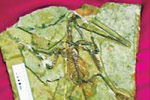Art
Water-and-Ink animation
Updated: 2008-06-04 15:20
By Wang Nan (chinaculture.org)
 |
|
|
Chinese animation has a history of over 80 years, starting with the "Wan Brothers" (Wan Laiming, Wan Guchan, and Wan Chaochen) who started to produce Chinese cartoon films in the 1920s in many kinds of categories, such as puppet,paper-cut and so on.
Ink-wash animation is one of them, having first appeared in the 1960. It was a breakthrough in the form of expression and aesthetic conception in animated area. Two Ink-wash films called "Tadpoles Searching for Mother" and "Cowherd's Flute," with Te Wei as art director and Qian Jiajun as technical director developed a high reputation both at home and abroad.
The former received the Best Animated Film Prize at the First Hundred Flower Awards as well as winning five international prizes, while “Cowherd’s Flute" was awarded the Golden Prize at the Odense International Fairy Tale Film Festival in Denmark.
Water ink animation reflects the thinking of traditional Chinese aesthetics. France, "Le Monde" in the commentary said: "The Chinese ink painting, scenery soft, meticulous style, and expressed concern that, indecision and happy action, the film has charm and poetry." A scholar also commended that, “This is entirely Chinese-style animation.”
Little Tadpole Looking for Mummy (1960)
 |
|
|
 |
|
|
The film focuses on a cloud of newly born tadpoles seeking their missing mother through an oddly predator-free world. They mistake a succession of animals for their mother, garnering a new clue about their mother’s appearance from each misunderstanding. A pleasant narrator explains the on-screen events slowly and clearly, making this film an excellent means of learning elementary Chinese.
This is the first of the four shorts to use the Chinese ink painting of artist Qi Baishi as a style guide, looking less like stereotypical animation and more like a museum painting come to life. Indeed, the visual novelty of the short is largely what recommends it, since the story is a relatively simple-minded affair.
However, the visuals of this film are nothing short of stunning. Once the novelty of the artistic style wears off, one can truly appreciate the incredible artistry that went into the film. It is challenging enough to paint a translucent shrimp using Chinese ink painting techniques. Animating two of them smoothly at 24 frames a second without varying the weight of the inks requires an astonishing level of technical virtuosity. The surface simplicity of the film masks a deceptive complexity.
The Cowboy's Flute(1963)
 |
|
|
 |
|
|
Produced in 1963, this film uses even more beautiful and detailed Chinese ink paintings to depict the charming relationship between a young cow herding boy with extraordinary flute playing skills and his faithful water buffalo. The boy falls asleep in a tree, and is soon dreaming that he has lost his buffalo. The dream sequence is delightfully whimsical, beginning with falling leaves that turn into butterflies and gradually lead the cow herder to a beautiful mist-filled valley. Here, the cow herder finally discovers his wayward animal, but the buffalo outright refuses to budge from his hiding spot, leaving the cow herder to find an alternate solution to his problem.
Specials

President Hu visits the US
President Hu Jintao is on a state visit to the US from Jan 18 to 21.

Ancient life
The discovery of the fossile of a female pterosaur nicknamed as Mrs T and her un-laid egg are shedding new light on ancient mysteries.

Economic Figures
China's GDP growth jumped 10.3 percent year-on-year in 2010, boosted by a faster-than-expected 9.8 percent expansion in the fourth quarter.